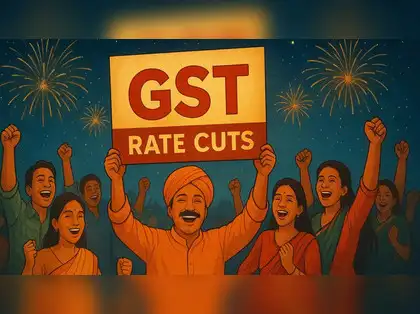
- After the 56th GST Council Meeting (3rd September 2025), the government announced GST 2.0 rollout from 22nd September.
- Over 375 common-use goods saw GST rate reductions.
- PM Modi called this the beginning of a “GST Savings Festival” aimed at reducing household expenditure and boosting consumption.
Impact on Consumers
- Household budgets to benefit significantly due to reduced prices of FMCG goods, durables, automobiles, and services.
- Finance Ministry to monitor monthly prices to ensure companies pass on benefits.
Sector-Wise Benefits
- FMCG & Food Items
- Amul & Mother Dairy: Paneer exempted (earlier 5%), milk cartons, butter, cheese, khakra, parathas—all cheaper (3–12%).
- Kellogg’s & Sunfeast: Cornflakes and biscuits ~11–12% cheaper.
- Pringles chips: 12% price cut.
- Ice creams: GST cut from 18% to 5%, making them significantly cheaper.
- Personal Care Products
- Shampoo, soap, toothpaste, hair oil etc. moved from 18% to 5% GST → 11–13% cheaper.
- Brands: L’Oréal, Himalaya, Close-Up, Dove.
- Cement & Construction Materials
- Cement GST cut from 28% to 18% (~10% cheaper).
- Boost for construction sector, real estate, and MSMEs.
- Insurance
- Health & life insurance premiums exempted (earlier 18%) → annual premiums down by ~15%.
- Consumer Durables
- Whirlpool appliances (ACs, dishwashers) saw cuts of ₹3,000–₹5,000.
- Automobiles
- Maruti Suzuki passed on full benefits: Cars cheaper by ₹46,400–₹1.29 lakh.
- Small cars: GST cut to 18% (earlier 28% + cess).
- Dealers faced losses (~₹2,500 crore) due to unsold stock taxed at old rates.
Economic Implications
- Boost to consumption demand due to lower inflation and increased purchasing power.
- Expected rise in savings and investments.
- Positive spillover for multiple sectors: FMCG, automobile, construction, MSMEs, and services.
- Transitional challenges for small enterprises and auto dealers (unused input tax credit, stock purchased at old rates).
UPSC Relevance
- GS Paper III (Economy): Tax reforms, GST rationalization, inflation management.
- Topics: Indirect taxation, impact on households, consumption-led growth, cooperative federalism (GST Council).
- Keywords: GST 2.0, GST Council, Consumption boost, Household savings, Inflation control, MSME support.
In essence: The GST 2.0 rate cuts are a landmark tax reform aimed at easing household expenses, improving demand, and strengthening economic growth, though transitional challenges exist.
